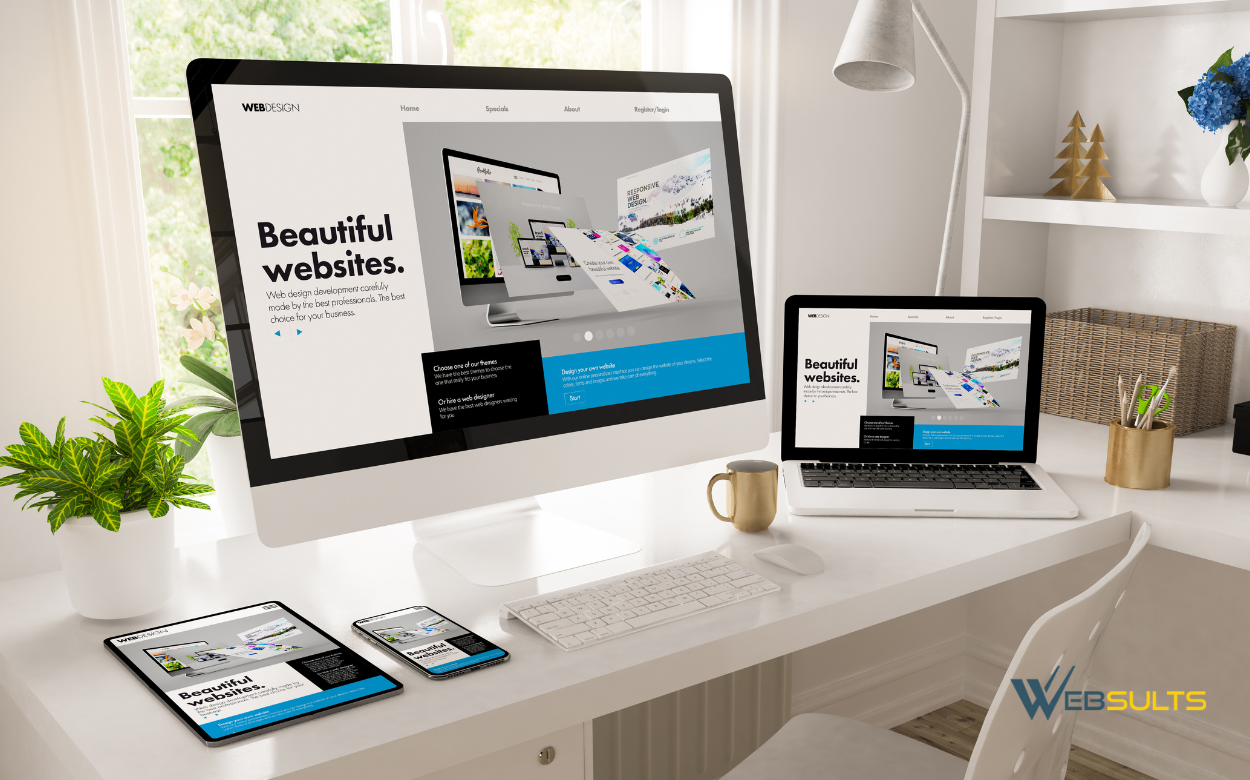Digital standards evolve at a rapid pace, with design trends, SEO algorithms, and user expectations advancing year after year. Even compared to just two to three years ago, user expectations are higher than ever before. Your website should be treated as a living digital asset, not a one-time project. Unfortunately, this is a common mistake many business owners make – and it can cost you traffic, leads, and conversions.
According to HubSpot’s 2025 State of Marketing Report, 73% of consumers judge a brand’s credibility based on the design quality of its website, while 50% will leave if it loads slowly or feels outdated. As we move into 2026, keeping your website modern, mobile-friendly, and optimized for new SEO standards isn’t optional — it’s essential for growth.
Today, we’re sharing the five key signs that it’s time to plan a website redesign in 2026, and what updates can future-proof your digital presence this year.
1. Your Website Looks Outdated
Popular 2026 web design trends include minimalist user interfaces, immersive dark mode layouts, motion-based elements, and accessibility-first principles. If you’re not keeping pace with modern UX/UI standards, your website can quickly appear dated — even if it was redesigned just two or three years ago.
The Nielsen Norman Group has found that users form an opinion about your website’s credibility within 0.05 seconds of seeing it. Cluttered layouts, poor contrast, or small fonts can instantly erode trust. By switching to cleaner layouts, high-contrast color schemes, and accessible typography, your site becomes easier to read and navigate — building user confidence from the first click.
Many 2026 redesigns are also incorporating AI-generated layouts and personalization tools, adapting to visitor behavior in real time. These technologies not only modernize the look of your site but also help convert visitors into customers more effectively.
2. It’s Not Mobile-First or Fully Responsive
Mobile-first design is now a non-negotiable standard. As of 2025, Google has fully transitioned to mobile-first indexing, meaning sites that aren’t responsive across devices can lose ranking visibility (Google Developers).
If your site still struggles with mobile navigation, slow loading, or poor visual alignment on smartphones and tablets, it’s time for a redesign. A WordPress 2026 rebuild can help you meet modern responsive standards with ease — thanks to its flexible block editor, improved theme frameworks, and full-site editing capabilities.
Use tools like Google’s Mobile-Friendly Test to assess your current site performance. If your mobile usability score falls short, even small redesigns — such as improved image compression, responsive grid systems, or lightweight scripts — can boost both user satisfaction and SEO performance.
3. You’re Not Seeing Results: Low Traffic, Conversions, or Engagement
If you’ve noticed a steady decline in traffic, conversions, or engagement, your site’s design and backend performance may be the reason. The 2026 version of Google’s Core Web Vitals emphasizes Interaction to Next Paint (INP) and Cumulative Layout Shift (CLS) – both critical to ranking and user experience.
A slow or clunky site leads to high bounce rates, fewer page visits, and a lower ROI. Redesigning your website to optimize Core Web Vitals, internal linking, and SEO metadata can significantly improve these results.
| Metric | Before Redesign | After Redesign | Improvement |
|---|---|---|---|
| Page Load Time | 4.8 seconds | 1.9 seconds | +35% conversions |
| Bounce Rate | 70% | 42% | +28% engagement |
| Organic Clicks (YoY) | -10% | +25% | Increased visibility |
In 2026, successful websites are built for AI-driven search. Google’s Search Generative Experience (now AI Overviews) uses machine learning to summarize answers from high-quality sites. To rank well here, your redesign should prioritize clear structure, semantic headings, and optimized content that demonstrates expertise, experience, authority, and trust (EEAT).
4. You’ve Outgrown Your Site’s Structure or Features
As your business expands, your website must evolve too. Many small to mid-sized businesses in 2026 are upgrading their sites to include CRM integrations, booking systems, AI chat support, and improved analytics dashboards.
If you’re still relying on outdated WordPress themes or static code, your site could be limiting your potential. A WordPress 2026 redesign offers advanced full-site editing, reusable design blocks, and performance tools that make your site scalable as your business grows.
For example:
- eCommerce sites can integrate advanced product filtering and automated inventory tools.
- Service businesses can add quote forms and appointment scheduling tools.
- Professional firms can add case studies or newsroom features to strengthen brand authority.
Redesigning with a modern CMS ensures smoother workflows and future updates without overhauling your entire website again. The WordPress.org 2026 roadmap emphasizes flexibility, accessibility, and performance — ensuring your next redesign stays relevant for years.
5. Your Brand or Business Has Changed
If your brand has undergone a visual refresh, expanded its services, or shifted audiences, your website must evolve accordingly. Outdated branding or mismatched messaging can confuse potential customers and harm your credibility.
A website redesign in 2026 is your chance to realign your digital identity – from updated visuals and tone to SEO-optimized service pages that reflect who you are today. Businesses that align branding across all platforms see up to 23% higher revenue consistency, according to DataBox’s 2025 study.
Use this opportunity to:
- Redefine your messaging and values
- Update visuals (logos, fonts, color palettes)
- Add relevant content (blog, case studies, testimonials)
- Improve conversion-focused pages and calls to action
When paired with updated social media profiles and fresh content marketing, your redesign can reintroduce your business to past clients and attract new audiences ready to engage.
Bonus: What a Website Redesign Could Include in 2026
A redesign in 2026 can involve either a full rebuild or targeted improvements, depending on your goals. Modern websites now include:
- WordPress 2026 full-site editing and accessibility upgrades compliant with WCAG 2.2+
- AI-powered personalization and on-site chat automation
- Security updates with HTTPS, firewalls, and malware scanning
- Optimized hosting and global CDN integration for faster loading
- Core Web Vitals optimization (LCP, CLS, INP)
- Enhanced on-page SEO for AI Overviews and voice search
Think of your redesign as a digital investment, not an expense. A forward-thinking redesign will help you compete with brands already leveraging AI and automation to engage users more efficiently.
Think of It as an Investment, Not an Expense
A website redesign in 2026 isn’t just about visual appeal — it’s about functionality, accessibility, and measurable performance. Your site is often the first point of contact between your business and your audience. If it doesn’t reflect your brand’s professionalism and expertise, you’re leaving opportunities on the table.
At Websults, our team combines web design, SEO strategy, and digital marketing insights to help businesses create sites that perform at every level. Whether you’re considering a minor refresh or a full-scale WordPress 2026 redesign, our experienced developers and marketing strategists will ensure your website meets both current trends and long-term business goals.
Are you unsure if your website is holding your business back? Websults offers a range of Web Design Services, SEO Services, and Website Maintenance to help you plan and execute a successful redesign this year.




